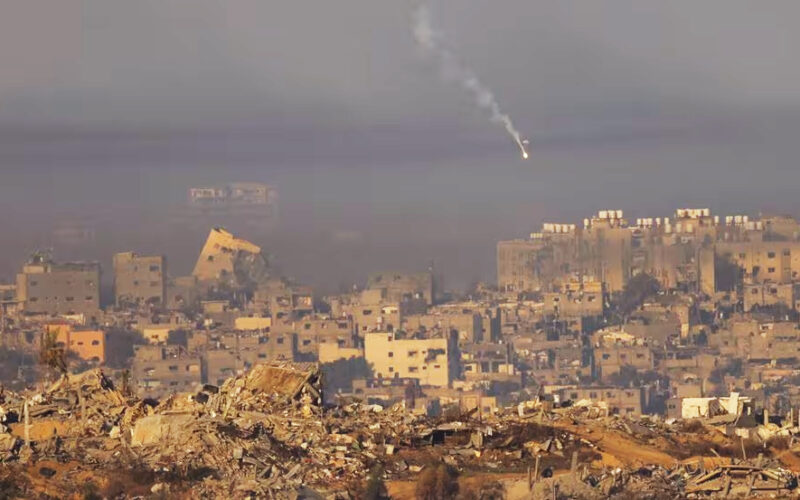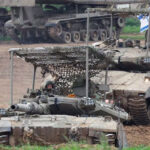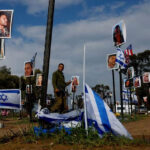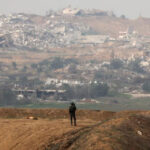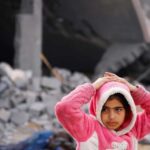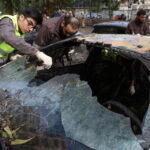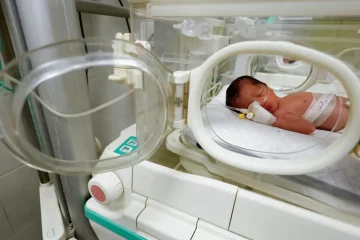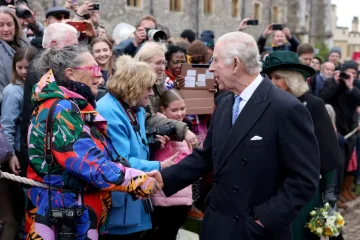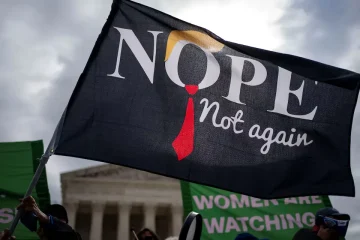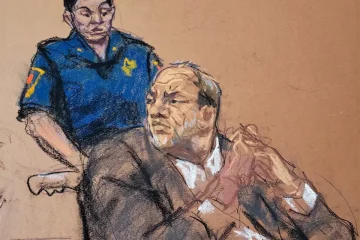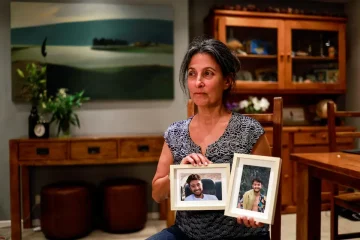ISRAELI forces bombed wide areas of the Gaza Strip, killing and wounding dozens of Palestinians, as civilians in the besieged territory sought shelter in an ever-shrinking area of the south.
The Hamas Palestinian militant group said its fighters clashed with Israeli troops about 2 km (1 mile) from the southern city of Khan Younis, as residents said they feared a fresh Israeli ground offensive was building there. There was no immediate comment from Israel.
The Jabalia refugee camp in the north of the Hamas-ruled enclave was among the sites hit reported hit from the air. A Gazan health ministry spokesperson said several people were killed by an Israeli air strike.
Footage obtained by Reuters showed a boy covered in grey dust, sitting weeping amid crumbled cement and rubble from collapsed buildings.
“My father was martyred (killed),” he cried in a hoarse voice.
A girl in a pink sweatshirt, also coated with dust, stood between piles of rubble saying: “No, no, no.”
Bombardments from war planes and artillery also concentrated on Khan Younis and Rafah, another city in Gaza’s south, residents said, and hospitals were struggling to cope with the flow of wounded.
There was no immediate comment from Israel on the reported actions.
The renewed warfare followed the end on Friday of a seven-day pause in the fighting between Israeli forces and Hamas militants which had allowed an exchange of Israeli hostages and Palestinian prisoners.
The violence took place despite calls from the United States – Israel’s closest ally – for Israel to avoid further harm to Palestinian civilians.
More than 15,523 people have been killed, according to Gaza’s health ministry, in nearly two months of warfare that broke out after a Hamas cross-border raid on southern Israel on Oct. 7 in which 1,200 Israelis were killed and more than 200 taken hostage.
Israel says it is acting to annihilate Hamas, saying it poses a mortal threat to the Jewish state’s very existence. The initial Hamas attack and the ensuing war amount to the bloodiest episode in the decades-old wider Israel-Palestinian conflict.
Israeli Strategic Affairs Minister Ron Dermer, speaking to ABC News, said the military pressure was to force Hamas to make a deal on further exchanges of prisoners and hostages. “And that military pressure continued on Friday (after the truce ended) and will continue in the days and weeks ahead.”
GROUND OFFENSIVE FEARED
Gaza residents said on Sunday they feared an Israeli ground offensive on the southern areas was imminent. Tanks had cut off the road between Khan Younis and Deir Al-Balah in central Gaza, effectively dividing the Gaza Strip into three areas, they said.
The Israeli military ordered Palestinians to evacuate several areas in and around Khan Younis. It posted a map highlighting shelters they should go to west of Khan Younis and south towards Rafah, on the border with Egypt.
But residents said that areas they had been told to go to were themselves coming under attack.
Israeli tanks shelled the eastern sector of Rafah on Sunday morning, residents said. There was no immediate comment from Israel on that.
There was hardly any space for more displaced people in the south after hundreds of thousands had fled the Israeli ground invasion in the north of the enclave, the residents said.
“Before, we used to ask ourselves whether we will die or not on this war, but in the past two days since Friday, we fear it is just a matter of time,” said Maher, a 37-year-old father of three, who spoke to Reuters by telephone.
“I am a resident of Gaza City, then we moved to Al-Karara in southern Gaza Strip and yesterday we fled to deeper shelter in Khan Younis and today we are trying to flee under the bombardment to Rafah,” he said.
U.N. officials and residents said it was difficult to heed Israeli evacuation orders because of patchy internet access and no regular supply of electricity.
Israeli Prime Minister Benjamin Netanyahu said on Saturday that Israel was coordinating with the U.S. and international organisations to define “safe areas” for Gaza civilians.

TUNNELS HIT
The Israeli military said on Sunday its war planes and helicopters had struck Hamas targets including tunnel shafts, command centres and weapons storage facilities. Naval forces had hit Hamas vessels on the coast, it said.
The military declined to give figures on the number of air strikes carried out.
Palestinian health officials said air strikes destroyed several houses in the Al-Karara town near Khan Younis overnight, killing several people including children.
Journalists on the border between Gaza and Israel said huge plumes of smoke were rising from a wide area, turning the sky grey.
Hamas said it targeted the coastal Israeli city of Tel Aviv with a rocket barrage. There were no reports of damage, but paramedics said one man was treated for a shrapnel injury.
On another front, Israeli forces and Hezbollah militants traded fire across the Israel-Lebanon border and Israel said several of its soldiers were wounded when an anti-tank missile fired from Lebanon hit a vehicle in the Beit Hillel area of northern Israel.
Reuters could not independently verify the accounts.
About 1.8 million people, or 80% of Gaza’s population, have fled their homes since Oct. 7, the United Nations says.
More than 400,000 displaced people have sought shelter in Rafah and nearly 300,000 have taken shelter in Khan Younis, according to the U.N. humanitarian office.

